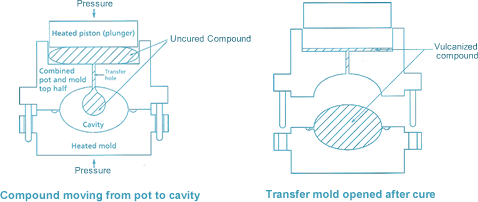The transfer molding process combines attributes of both compression and injection molding making it an ideal manufacturing method for many applications. It is capable of molding part shapes that are more intricate than compression molding but not as intricate as injection molding. This process is ideal for forming parts that require: exact positioning, bonding rubber to fragile metal parts (such as wire), mold designs that contain multiple cavities and can trap air, and intricate parts with lower volume requirements. The major difference between compression and transfer is that the uncured rubber is placed into a “pot” located between the top plate and a plunger. When the uncured rubber is placed into the pot, the mold is then closed and the material is compressed by the plunger and transferred through sprues into the mold cavity below.

Our molding press capabilities for transfer molding are the same as for the compression line.
Advantages of Transfer molding
• Shorter production cycle than the compression method
• Benefits are seen in mid to high volume production
• Maintains closer dimensional tolerances
• Closed mold transfer supports molding of complex geometries and over-molding
• Advantages for colored or translucent compounds
• Provides uniformity
• Fast mold setup
• Economical process for medium to high precision components
Our team has extensive experience when it comes to transfer molding. We create quality custom transfer molding with the highest standards in customer service. If you have a new project, contact us today to learn which rubber molding process is the best for your application.
